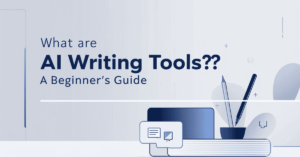Let me paint a picture you’ve probably lived through: You’ve just finished editing a killer video. It’s witty, visually stunning, and packed with value. But then you remember—it needs to reach a global audience. Cue the panic. Hiring voice actors, negotiating rates, syncing audio in 10 languages… and don’t get me started on the costs. I’ve been there, sweating over timelines and budgets, wondering if there’s a better way.
That’s where AI dubbing tools come in. But let’s be real—not all tools are created equal. Some sound like robots reciting Shakespeare, others take forever to process, and a few might even cost you a kidney. After testing over 20 platforms (yes, I did the legwork), I’ve narrowed it down to the 5 best AI dubbing tools 2025 that actually deliver. No fluff, no jargon—just straight-up solutions to your dubbing nightmares.
Why AI Dubbing Matters in 2025
Before we dive in, let’s talk about why this matters. In 2025, content isn’t just king—it’s a polyglot emperor. With 80% of internet users consuming video weekly (and 60% preferring content in their native language), skipping multilingual dubbing means leaving money and reach on the table.
I learned this the hard way when a client rejected my English-only demo. “We need this in Spanish, French, and Mandarin by Friday,” they said. Cue my 3 a.m. coffee runs and frantic Googling. That’s when I discovered AI dubbing tools—and my workflow hasn’t been the same since.
How I Tested These Tools (No BS Criteria)
I didn’t just skim feature lists. I threw these tools into the trenches:
- Language Range: Does it support niche dialects or just “generic” Spanish?
- Voice Quality: Does it sound like a human or a GPS?
- Speed: Can it handle a 30-minute video without crashing?
- Pricing: Is it budget-friendly for freelancers and teams?
- Ease of Use: Can my tech-challenged aunt figure it out?
Spoiler: These 5 aced the test.
Rask AI: The Auto-Translator That Feels Human
What It Solves: Translating and dubbing videos in one click.
I used to waste hours separating translation and dubbing tasks. With Rask AI, I uploaded a 15-minute explainer video, selected “French, German, and Japanese,” and let it work. The result? Natural-sounding voices that matched the video’s tone.
Key Features:
- 130+ languages and accents (even Swahili and Basque).
- Auto-syncs lip movements (no creepy delays).
- “Clone” your voice for brand consistency.
Pricing: Starts at $49/month for 30 minutes of video.
Why I Use It: When I need to repurpose a YouTube video for LinkedIn in 3 languages before lunch.
ElevenLabs: For Creators Obsessed with Voice Realism
What It Solves: Robotic voiceovers that put audiences to sleep.
ElevenLabs blew my mind. I fed it a sci-fi short film script, and the AI generated a voice with emotion—dramatic pauses, excitement, and all. It’s like having Morgan Freeman on standby.
Key Features:
- Emotion and pitch control sliders.
- Pre-built “character voices” (think “enthusiastic teacher” or “calm CEO”).
- Supports rare languages like Icelandic and Māori.
Pricing: Free for 10k characters; $22/month for heavy users.
Why I Use It: For narrative-driven content (documentaries, podcasts) where voice acting makes or breaks the story.
Dubverse.ai: The Budget-Friendly Workhorse
What It Solves: High costs for small teams and indie creators.
As a freelancer, I’ve cried over 500/monthtoolsubscriptions.Dubverse.ailetsmedub45−minutewebinarsinHindiorPortuguesefor500/monthtoolsubscriptions.Dubverse.ailetsmedub45−minutewebinarsinHindiorPortuguesefor20/month. The voices aren’t Oscar-worthy, but they’re clear and professional.
Key Features:
- Pay-as-you-go credits (no monthly lock-in).
- Built-in subtitling and SRT file exports.
- Team collaboration dashboards.
Pricing: $20/month for 2 hours of dubbing.
Why I Use It: When I’m editing e-learning courses or testimonials that don’t need Hollywood flair.
Fliki: Social Media Sizzle in Minutes
What It Solves: Dubbing short clips for TikTok, Reels, and YouTube Shorts.
I once tried dubbing a 60-second fitness reel manually. It took 4 hours. With Fliki, I did it in 10 minutes—complete with upbeat Spanish and Korean voiceovers that matched the video’s energy.
Key Features:
- AI suggests “trending” voice styles (e.g., “TikTok influencer” or “corporate”).
- Direct upload to social platforms.
- Free stock video library for edits.
Pricing: Free for 5 minutes; $28/month for unlimited.
Why I Use It: When virality depends on speed and multilingual reach.
Colossyan: For Businesses That Need Studio Quality
What It Solves: Cringeworthy corporate videos that embarrass your HR team.
Colossyan is my go-to for Fortune 500 clients. It offers custom voice avatars, ensuring the German dub of a product launch doesn’t sound like a different company. Plus, their “boardroom” and “friendly” voice presets nail brand guidelines.
Key Features:
- Enterprise-grade security (GDPR compliant).
- Voice clones for company spokespeople.
- API integration for bulk projects.
Pricing: Custom quotes (starts around $299/month).
Why I Use It: When working with brands that demand perfection (and have the budget for it).
How to Choose Your AI Dubbing Sidekick
Still stuck? Ask yourself:
- “Am I dubbing 10-second memes or 2-hour films?” → Fliki for shorts, Colossyan for films.
- “Do I need 50 languages or just 3?” → Rask AI for quantity, ElevenLabs for quality.
- “Is my audience picky about accents?” → ElevenLabs’ dialect control is unmatched.
Final Take: Dubbing Doesn’t Have to Suck
I get it—AI tools can feel impersonal. But in 2025, they’re the bridge between your content and a global audience. Whether you’re a solopreneur or a Netflix-wannabe, the 5 Best AI Dubbing Tools (2025) – Dub Videos in Different Languages Without Losing Your Sanity cut the grunt work so you can focus on storytelling.
The best part? Most offer free trials. Pick one, dub that video you’ve been procrastinating on, and watch your engagement soar. Trust me—if I could do it after that 3 a.m. coffee disaster, so can you..








